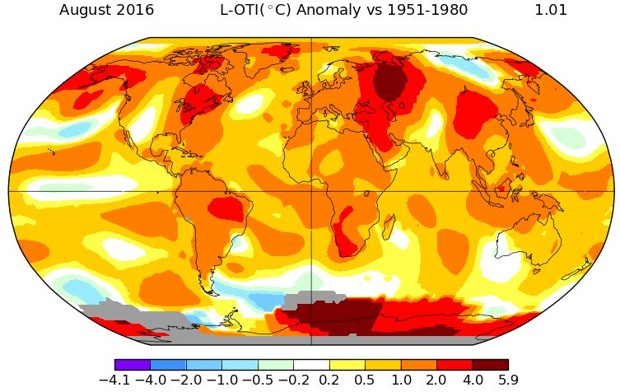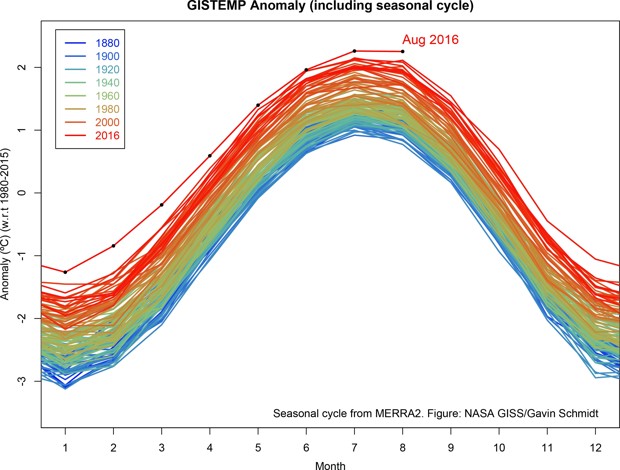NASA: The Earth Gets Scorched With Back-to-Back Hottest Months
August and July tied for the warmest months globally in 136 years of records.
The planet’s transformation into an oven in which you could steam a ham draws closer with news that August tied for the warmest month in known history.
The global average temperature was 0.98 degrees Celsius above the mean temperature for August, and 0.16 degrees warmer than the last record-hot August in 2014, according to an analysis from NASA’s Goddard Institute for Space Studies. The month wound up tying with July 2016 for the warmest in modern records, which stretch back 136 years, and propels the Earth toward what’s likely to be the hottest-ever year on the books.
Prospects for a record 2016 given Jan-Aug data remain v. high (> 99%) pic.twitter.com/tnaeL0yIbA
— Gavin Schmidt (@ClimateOfGavin) September 12, 2016
Places that endured unusual torridness include the Northeast U.S. and Alaska, western Russia, China, and much of Antarctica. Areas with abnormal coolness include… well, there weren’t many, as shown in this map of August’s heat spikes from NASA:

The incredible warmth was unusual in that seasonal temperatures around the world usually top out in July, not August, too. It also probably played a role in the devastating flooding that hit Louisiana in the middle of the month,according to NOAA. Here’s more from Goddard:
“Monthly rankings, which vary by only a few hundredths of a degree, are inherently fragile,” said GISS Director Gavin Schmidt. “We stress that the long-term trends are the most important for understanding the ongoing changes that are affecting our planet.”
The record warm August continued a streak of 11 consecutive months dating back to October 2015 that have set new monthly high-temperature records. The monthly analysis by the GISS team is assembled from publicly available data acquired by about 6,300 meteorological stations around the world, ship- and buoy-based instruments measuring sea surface temperature, and Antarctic research stations. The modern global temperature record begins around 1880 because previous observations didn’t cover enough of the planet.




